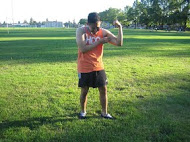Dermatophyte infections are fungal infections that can affect the superficial areas of the body, such as the skin, hair, and nails, and require keratin for growth. Dermatophytes do not come from a particular fungus but rather, there are three main genera from where dermatophytes infections can arise from, namely, Trichophyton, Microsporum, and Epidermophyton. Dermatophyte infections are sometimes also called “ringworm” or “tinea” however this is a misnomer as it is not caused by a worm. Dermatophytes are dependent on their host to survive, which may be a human (anthropophilic), animal (zoophilic), or soil (geophilic). Dermatophyte infections are typically spread through direct contact with an infected person or animal. However, it can also be transmitted through infected clothing, bedding and towels. Common examples of dermatophyte infections include athlete’s foot and jock itch.
Common Causes of Dermatophyte Infections
Dermatophytes typically live on the moist areas of the skin, on environmental surfaces and household items. There are about 40 species of dermatophytes that can cause infections to their hosts:
Anthropophilic organisms:
- T. rubrum
- T. tonsurans
- T. interdigitale
- M. audonii
- M. ferrugineum
Zoophilic organisms:
- M. canis (from cats and dogs)
- T. equinum (from horses)
- M. nanum (from pigs)
- T. verrucosum (from cattles)
Geophilic organisms:
- M. fulvum
- M. gypseum
Signs and Symptoms of Dermatophyte Infections
Signs and symptoms of dermatophyte infections generally appear between four to fourteen days after exposure to the fungi, as incubation period will depend on the specie of fungi involved in the infection. Dermatophyte infections can occur anywhere on the skin, such as the scalp, nails, legs, arms, feet, and groin, but they are mostly found in the moist surface areas of the body. The following are the most common signs and symptoms of dermatophyte infections:
- Redness, scaling, and cracking of the skin
- Itchiness
- Ring-shaped rashes
- If infections occurs in hairy areas, hair may fall out
- If infection occurs in the nails, may cause nails to discolor, thicken, and crumble
- In serious infections, abscess or cellulitis

Treatment for Dermatophyte Infections
Dermatophyte infections are not always serious but require treatment to avoid exacerbating and spreading the infection. Medication and duration of treatment will depend on the underlying cause and the location of the infection, which may last from two to six weeks. At first signs of dermatophyte infections, seek medical attention. Treatment for dermatophyte infections include:
- Scalp infections: oral antifungal medications
- Skin infections: topical antifungal medications
- Nail infections: oral and/ or topical antifungal medications
- Avoid scratching the affected area as it may cause the infection to spread
Dermatophyte infections are fungal infections that affect the hair, skin and nails. These infections are usually treated with antifungal oral or topical medications. To learn more about how to recognize signs and symptoms of infections, such as dermatophyte infections, enroll in First Aid Courses.
Online Sources:
http://www.cdc.gov/fungal/diseases/ringworm/health-professionals.html
